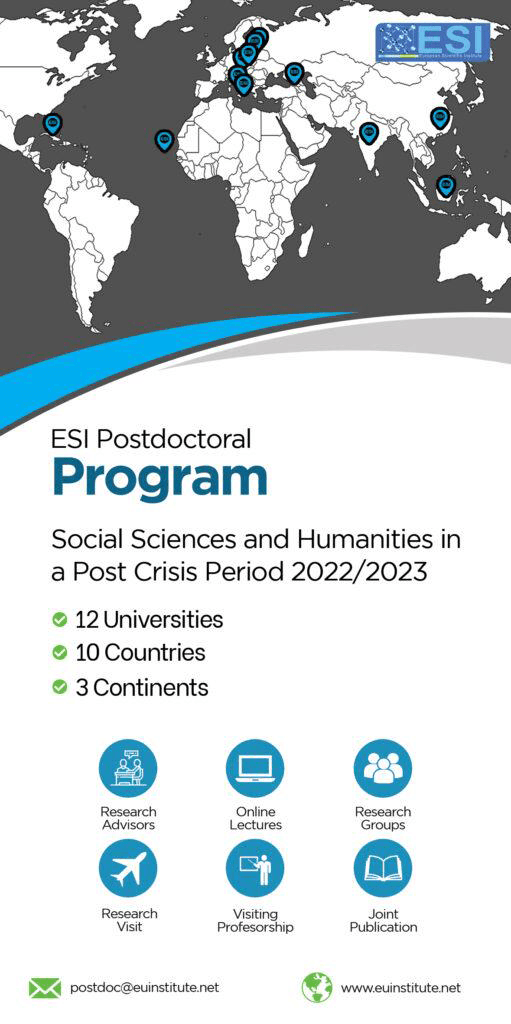Quantification des mutations des formations végétales 2002- 2022 dans la moitié sud du Parc National de la Comoé, au Nord de la Côte d’Ivoire par imagerie spatiale
Abstract
Le Parc National de la Comoé, situé au nord de la Côte d’Ivoire, est un écosystème riche mais soumis à des pressions anthropiques et climatiques malgré son statut protégé. Cette étude analyse l’évolution de l’occupation du sol dans la moitié sud du parc entre 2002, 2012 et 2022, à partir d’images satellitaires LANDSAT. La méthodologie multi-temporelle, validée par des matrices de confusion, permet de quantifier les changements entre classes d’occupation du sol. L’étude de la dynamique végétale dans la partie sud du Parc National de la Comoé (2002-2022) révèle deux phases contrastées. De 2002 à 2012, une forte diminution des forêts denses (-51%) avec une légère hausse des savanes. De de 2012 à 2022, une régénération partielle des forêts denses (+47%) et des forêts claires/savanes boisées (+33,5%) avec une légère baisse des savanes. Sur l’ensemble de la période (2002-2022),, les savanes arbustives affichent la plus grande stabilité (89,6%) alors que les formations forestières sont plus vulnérables aux mutations, accompagnée d’une légère augmentation des sols nus attestant des pressions anthropiques et climatiques. Par ailleurs, le réseau hydrographique a considérablement augmenté, illustrant des changements structurels importants. Ces résultats reflètent l’influence combinée de facteurs naturels et humains. Malgré une résilience certaine, la fragmentation des habitats et les pressions persistantes imposent une gestion intégrée, notamment la restauration des corridors écologiques et la gestion des feux, pour assurer la conservation biologique à long terme.
Comoé National Park, located in northern Côte d’Ivoire, is a rich ecosystem but faces anthropogenic and climatic pressures despite its protected status. This study analyzes land cover changes in the southern half of the park between 2002, 2012, and 2022 using LANDSAT satellite imagery. The multi-temporal methodology, validated by confusion matrices, quantifies changes between land cover classes. The vegetation dynamics reveal two contrasting phases. From 2002 to 2012, dense forests strongly declined (-51%) while savannas slightly increased. From 2012 to 2022, partial regeneration occurred in dense forests (+47%) and in open forests/wooded savannas (+33.5%), accompanied by a slight decrease in savannas. Over the entire period, shrub savannas showed the greatest stability (89.6%), whereas forest formations were more vulnerable to change, alongside a slight increase in bare soils, indicating human and climatic pressures. Additionally, the hydrographic network has been significantly expanded, illustrating major structural changes. These results reflect the combined influence of natural and human factors. Despite evident resilience, habitat fragmentation and ongoing pressures require integrated management, notably ecological corridor restoration and fire management, to ensure long-term biological conservation.
Downloads
Metrics
References
2. Barima Y. S. S., 2009. Dynamique, fragmentation et diversité végétale des paysages en milieux de transition forêt-savane dans le département de Tanda (Côte d’Ivoire). Thèse de Doctorat, Université libre de Bruxelles (Bruxelles, Belgique), 196 p.
3. Bodin, O., Tengö, M., Norman, A., Lundberg, J., Elmqvist, T., 2006. The value of small size: Loss of forest patches and ecological thresholds in southern Madagascar. Ecological Applications, 16(2), 440–451. https://doi.org/10.1890/1051-0761(2006)016[0440:TVOSSL]2.0.CO;2.
4. Brncic, T. M., Willis, K. J., Harris, D. J., & Washington, R., 2007. Culture or climate? The relative influences of past processes on the composition of the lowland Congo rainforest. Philosophical Transactions of the Royal Society B: Biological Sciences, 362(1478), 229-242. https://doi.org/10.1098/rstb.2006.1982.
5. Chander G., et Markham B. L., 2003. Revised Landsat 5 TM Radiometric Calibration Procedures and Post-Calibration Dynamic Ranges. IEEE transaction on geoscience and remote sensing, 41(11) : 2674-2677.
6. Fairhead, J., Leach, M., 1996. Misreading the African landscape. Cambridge University Press. https://doi.org/10.1017/cbo9781139164023.
7. Goetze, D., Hörsch, B., & Porembski, S., 2006. Dynamics of forest–savanna mosaics in north-eastern Ivory Coast from 1954 to 2002. Journal of Biogeography, 33(4), 653–664. https://doi.org/10.1111/j.1365-2699.2005.01312.x.
8. Harper, K. A., Macdonald, S. E., Burton, P. J., Chen, J., Brosofske, K. D., Saunders, S. C., Esseen, P. A., 2005. Edge influence on forest structure and composition in fragmented landscapes. Conservation Biology, 19(3), 768-782. https://doi.org/10.1111/j.1523-1739.2005.00045.x.
9. Hennenberg, K.J.; Fischer, F.; Kouadio, K.; Goetze, D.; Orthmann, B.; Linsenmair, K.E.; Jeltsch, F.; Porembski, S., 2006. Phytomass and fire occurrence along forest-savanna transects in the Comoé National Park, Ivory Coast; Journal of Tropical Ecology 22: pp. 303-311.
10. Koueita, M., Konaté, K., Diomandé, M., Brou, A. N., 2018. La problématique de gestion du Parc National de la Comoé (PNC) en Côte d’Ivoire, entre la survie des populations riveraines et la conservation de la biodiversité. European Scientific Journal, 14(35), 391–411. https://doi.org/10.19044/esj.2018.v14n35p391.
11. Laris, P., Wardell, D. A., 2006. Good, bad or ‘necessary evil’? Reinterpreting the colonial burning experiments in the savanna landscapes of West Africa. The Geographical Journal, 172(4), 271–290. https://doi.org/10.1111/j.1475-4959.2006.00215.x.
12. Lauginie, F. R., 2007. Conservation de la nature et aires protégées en Côte d'Ivoire (Vol. 1, XX-668 p.). CEDA/NEI/Hachette et Afrique Nature. Nicholson, S. E., Funk, C., & Fink, A. H. (2018). Rainfall over the African continent from the 19th through the 21st century. Global and Planetary Change, 165, 114–127. https://doi.org/10.1016/j.gloplacha.2017.12.014.
13. Oszwald J., Antoine L., Arnauld de Sartre X., Marcello T., Gond V., 2010. Analyse des directions de changement des états de surface végétaux pour renseigner la dynamique du front pionnier de Maçaranduba (Brésil) entre 1997 et 2006. Télédétection, 9(2) : 97-111.
14. Rainfroy, C., 2017. Côte d’Ivoire : le parc national de la Comoé n’est plus en péril, selon l’UNESCO. Jeune Afrique. Repéré à https://www.jeuneafrique.com/454042/societe/cote-divoire-parc-national-de-comoe-retire-de-liste-patrimoine-peril/.
15. Sankaran, M., Hanan, N. P., Scholes, R. J., Ratnam, J., Augustine, D. J., Cade, B. S., Gignoux, J., Higgins, S. I., Le Roux, X., Ludwig, F., Ardo, J., Banyikwa, F., Bronn, A., Bucini, G., Caylor, K. K., Coughenour, M. B., Diouf, A., Ekaya, W., Feral, C. J., February, E. C., Frost, P. G., Hiernaux, P., Hrabar, H., Metzger, K. L., Prins, H. H., Ringrose, S., Sea, W., Tews, J., Worden, J., & Zambatis, N., 2005. Determinants of woody cover in African savannas. Nature, 438(7069), 846–849. https://doi.org/10.1038/nature04070.
16. Sasaki, N., Putz, F. E., 2009. Critical need for new definitions of “forest” and “forest degradation” in global climate change agreements. Conservation Letters, 2(4), 226–232. https://doi.org/10.1111/j.1755-263X.2009.00067.x.
17. Scheiter, S., Higgins, S. I., 2009. Impacts of climate change on the vegetation of Africa: An adaptive dynamic vegetation modelling approach. Global Change Biology, 15(9), 2224–2246. https://doi.org/10.1111/j.1365-2486.2008.01838.x.
18. Staver, A. C., Archibald, S., Levin, S. A., 2011. The global extent and determinants of savanna and forest as alternative biome states. Science, 334(6053), 230-232. https://doi.org/10.1126/science.1210465.
Copyright (c) 2025 Alassane Konate, N’da Hyppolite Dibi, Affi Jeanne Bongoua-Devisme

This work is licensed under a Creative Commons Attribution 4.0 International License.








